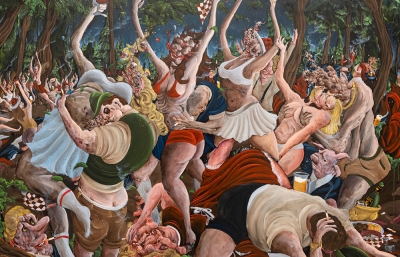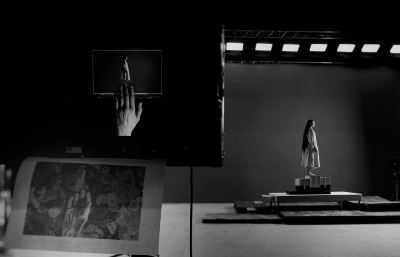Obviously, the Ed Ruscha exhibition at MoMA is gaining a ton of attention in the art world, but if you can sneak downstairs, Ron Magliozzi, the Curator in the Department of Film, has organized the wonderful Before Technicolor Early Color on Film. One of the highlights is the 1905 film, The Infernal Cave.
Acquired by the Museum in 1935, this inventive stencil-colored trick film has not been seen in its original colored version for many years. In the caves of hell, Satan stokes the eternal flames and evokes the souls of the damned, whom he turns to dust and plunges into the infernal depths. The coloring here is integral to the film’s sense of fantasy and wonder, seamlessly blending the stop-trick substitution effects (à la Georges Méliès) and enhancing the devil’s fiery magic.
This film marks one of the earliest uses of Pathé’s stencil-color process, which is similar in effect to hand-coloring. Stencils were prepared by hand using a pantograph, and ran the same length as the 35mm film print: several thousand frames. A different stencil was cut for each color dye to be applied. After this meticulous initial work (usually undertaken by women), black-and-white release prints were colored one dye at a time using an automated process, reducing the cost and labor involved in making each print, and further expanding the prevalence of color in early cinema.









